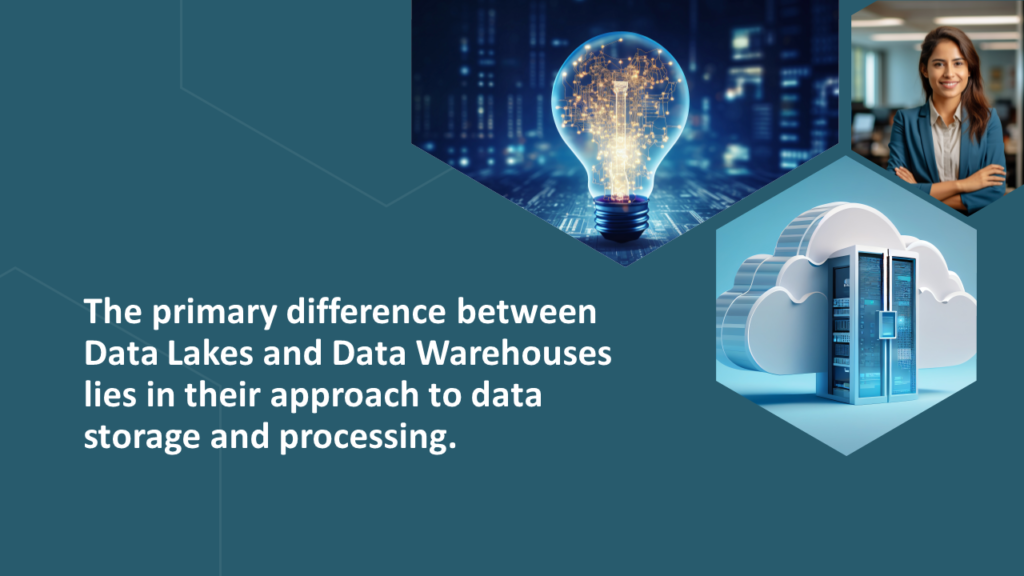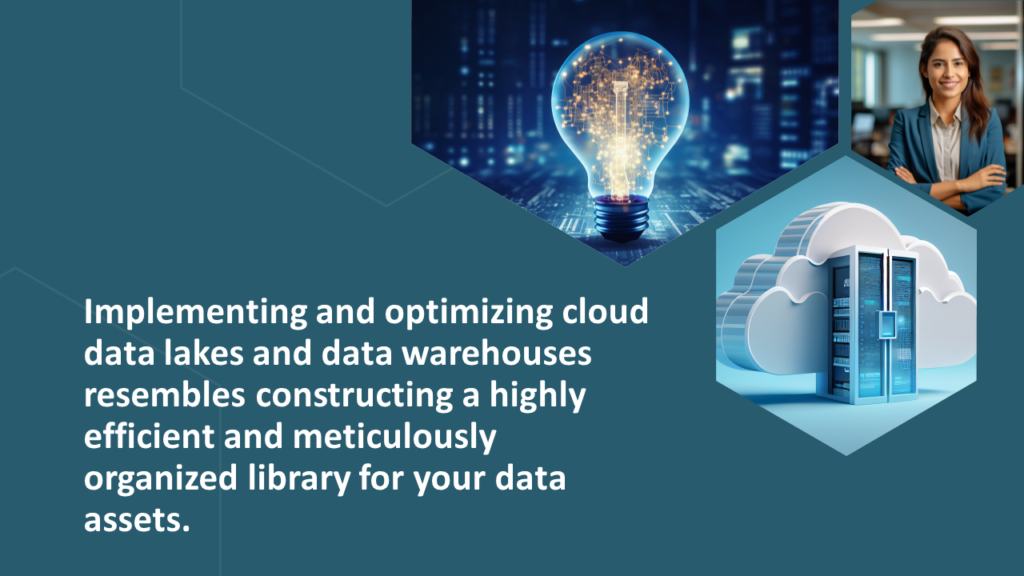Data Lakes vs. Data Warehouses – Understanding the Differences
In today’s data-driven world, managing and analyzing data efficiently is crucial for businesses to thrive. Two popular solutions for storing and processing large volumes of data are Data Lakes and Data Warehouses. While they may seem similar at first glance, they serve distinct purposes and have unique characteristics. Let’s dive into what sets them apart and how they can benefit your organization.
What are Data Lakes?
Data Lakes are vast repositories that store raw data in its native format, without the need for prior structuring or processing. They act as a central hub for storing structured, semi-structured, and unstructured data from various sources. These sources can vary from IoT devices, to social media platforms, and business applications.
What are Data Warehouses?
Data Warehouses are designed for storing structured data that has been processed, transformed, and organized for specific analytical purposes. They provide a structured and optimized environment for querying and analyzing data to derive insights for decision-making.
Differences between Data Lakes and Data Warehouses
The primary difference lies in their approach to data storage and processing. Data Lakes store raw data in its original form, enabling flexible exploration and analysis. In contrast, Data Warehouses store processed and structured data, optimized for efficient querying and reporting.
Data Storage Approach
Data Lakes store raw data in its native format without prior structuring or processing. They embrace a schema-on-read approach without a predefined schema. Instead of structuring the data before it’s ingested, as in a traditional relational database where you define the schema upfront, you read the data first and then interpret its schema as needed during the data analysis process.
Overall, schema-on-read is well-suited for scenarios where the structure of the data is not well-defined in advance or when dealing with large volumes of heterogeneous data. However, it also requires careful management to ensure that the interpretation of the schema during analysis is consistent and accurate.
In contrast, Data Warehouses store processed and structured data optimized for analytical queries. They adhere to a schema-on-write approach, where the schema is defined and enforced at the time of writing or ingesting the data into the storage system, typically a database. This means that data must conform to a predefined structure before it can be stored.
Schema-on-write is suitable for scenarios where the structure of the data is stable and known in advance, and where data integrity and consistency are paramount. However, it may not be as flexible or adaptable to changing data requirements compared to schema-on-read approaches.
Data Processing and Analysis
Data Lakes offer flexibility in data processing and analysis, allowing users to perform exploratory analysis and derive insights from raw data. They support various processing frameworks such as Apache Spark, Hadoop, and Apache Flink, enabling scalable data processing and advanced analytics.
In contrast, Data Warehouses are optimized for query performance and analytical processing. They leverage techniques like columnar storage, indexing, and query optimization to deliver fast and efficient querying capabilities. Data Warehouses enable organizations to run complex analytical queries and generate reports with minimal latency.
Scalability and Cost
Data Lakes provide scalable storage solutions, allowing organizations to store massive volumes of data cost-effectively. They leverage cloud storage services like Amazon S3, Azure Data Lake Storage, and Google Cloud Storage, which offer virtually unlimited scalability and pay-as-you-go pricing models.
While Data Warehouses also offer scalability, they may incur higher costs for storing and processing structured data. Organizations need to carefully manage resource utilization and optimize queries to control costs associated with Data Warehouses. Additionally, cloud-based Data Warehouses like Amazon Redshift, Azure Synapse Analytics, and Google BigQuery offer scalable computing resources for processing analytical workloads.
Understanding these differences is crucial for organizations to choose the right solution based on their specific requirements and use cases. Whether opting for the flexibility of a Data Lake or the performance of a Data Warehouse, selecting the appropriate data storage and processing approach is key to maximizing the value of organizational data assets.
What are they used for?
Both technologies function uniquely and offer diverse functionalities. It’s crucial to comprehend their distinct purposes and versatile capabilities to effectively leverage their potential.
Uses of Data Lakes
Exploratory Analysis and Data Science Projects
Data Lakes serve as fertile grounds for data exploration and experimentation. They provide data scientists and analysts with the flexibility to explore diverse datasets and test various hypotheses without the constraints of predefined schemas.
Storage of Diverse Data Types
Data Lakes are adept at storing structured, semi-structured, and unstructured data from various sources such as IoT devices, social media platforms, and sensor data. This versatility makes them ideal for accommodating different data types and formats.
Foundation for Advanced Analytics
By storing raw data in its native format, Data Lakes lay the groundwork for advanced analytics and machine learning. They enable data scientists to access and analyze large volumes of data to derive valuable insights and drive innovation.
Uses of Data Warehouses
Business Intelligence and Reporting
Data Warehouses are tailored for business intelligence and reporting purposes. They provide a structured environment for storing processed and structured data optimized for analytical queries and reporting.
Structured Data Storage and Optimization
Data Warehouses excel at storing structured data in predefined schemas, making them efficient for analytical processing. They optimize data storage and querying, leading to faster performance and improved efficiency.
Support for Decision-Making
Data Warehouses play a vital role in supporting decision-making processes by providing reliable and consistent data for generating insights. They enable organizations to analyze historical data, identify trends, and make informed decisions to drive business growth and competitiveness.
When are Data Lakes and Data Warehouses used?
Data Lakes are preferred when dealing with diverse data sources and when the schema of the data is not well-defined. They are suitable for scenarios where the focus is on data exploration and experimentation, such as developing machine learning models or conducting research.
Data Warehouses are used when there is a need for consistent and reliable data for reporting and analysis. They are ideal for scenarios where data quality, consistency, and performance are paramount, such as business intelligence and regulatory compliance.
Data Lake and Data Warehouse Tools
Data Lake and Data Warehouse Tools offered by Microsoft, Google, and Amazon reflect the unique and versatile nature of the underlying technologies. These IT giants provide a range of distinct tools tailored to meet diverse consumer needs. Here are some offerings from Microsoft, Google, and Amazon:
Microsoft
Azure Data Lake Storage (ADLS)
Azure Data Lake Storage is a scalable and secure cloud-based storage solution designed for building data lakes. It seamlessly integrates with other Azure services, providing a unified platform for storing and analyzing large volumes of data. ADLS offers features such as hierarchical namespace, fine-grained access control, and integration with Entra ID for enhanced security and compliance.
Azure Synapse Analytics
Azure Synapse Analytics is a fully managed analytics service that combines data warehousing and big data analytics capabilities. It enables organizations to query and analyze data at scale using familiar tools and languages like SQL and Apache Spark. Azure Synapse Analytics offers features such as intelligent caching, workload isolation, and integration with Power BI for interactive data visualization.
Google Cloud Storage (GCS)
Google Cloud Storage provides a flexible and scalable storage solution for building data lakes on Google Cloud Platform. It offers features such as object versioning, lifecycle management, and encryption at rest for secure and compliant data storage. GCS seamlessly integrates with other Google Cloud services like BigQuery and Dataproc for data processing and analytics.
BigQuery
Google BigQuery is a fully managed data warehouse service that enables organizations to analyze massive datasets using SQL queries. It offers features such as automatic scaling, columnar storage, and real-time data ingestion for high-performance analytics. BigQuery integrates with Google Cloud services like Dataflow and Looker for data integration and visualization.
Amazon
Amazon S3
Amazon Simple Storage Service (S3) is a scalable object storage service designed for building data lakes on Amazon Web Services. It provides features such as server-side encryption, versioning, and lifecycle policies for secure and cost-effective data storage. S3 integrates seamlessly with other AWS services like AWS Glue and Amazon Athena for data processing and analysis.
Amazon Redshift
Amazon Redshift is a fully managed data warehouse service that enables organizations to analyze large datasets using SQL queries. It offers features such as columnar storage, automatic backups, and advanced compression for efficient data storage and query performance. Redshift integrates with AWS services like AWS Data Pipeline and Amazon QuickSight for data integration and visualization.
These tools from Microsoft, Google, and Amazon provide organizations with the infrastructure and services needed to build and manage data lakes and data warehouses in the cloud. Whether storing raw data in a Data Lake or performing analytical queries in a Data Warehouse, these platforms offer the scalability, reliability, and performance required to unlock the full potential of organizational data assets.
Implementation and Optimization Best Practices
Implementing and optimizing cloud data lakes and data warehouses resembles constructing a highly efficient and meticulously organized library for your data assets. Here’s how to do it right:
Define Clear Objectives
Before diving in, decide what you want to achieve with your data lakes and warehouses. Are you looking to analyze customer behavior or streamline internal processes? Knowing your goals helps you design the right structure.
Choose the Right Tools
Select cloud platforms and tools that fit your needs and budget. Options like Amazon Web Services (AWS), Microsoft Azure, or Google Cloud Platform offer various services tailored for data storage and analysis.
Organize Your Data
Keep your data tidy by organizing files properly. Use folders, tags, and metadata to categorize information, making it easier to find later.
Ensure Data Quality
Maintain high data quality standards to avoid errors in analysis. Regularly clean and validate your data to remove duplicates, inconsistencies, and inaccuracies.
Implement Security Measures
Protect your data lakes and warehouses from unauthorized access by implementing robust security measures. Use encryption, access controls, and monitoring tools to safeguard sensitive information.
Embrace Scalability
Design your cloud infrastructure to scale easily as your data grows. Cloud platforms offer scalable solutions that can accommodate increasing storage and processing demands.
Optimize Performance
Fine-tune your data lakes and warehouses for optimal performance. Monitor resource usage, optimize queries, and leverage caching to speed up data retrieval and analysis.
Foster Collaboration
Encourage collaboration among teams by providing access to shared data lakes and warehouses. Foster a culture of data-driven decision-making by promoting knowledge sharing and collaboration.
Monitor and Iterate
Regularly monitor the performance of your data lakes and warehouses. Keep an eye on key metrics like latency, throughput, and resource utilization. Use insights gathered to identify areas for improvement and iterate on your implementation.
Stay Updated
Stay informed about the latest trends and advancements in cloud data management. Continuously update your knowledge and skills to leverage new technologies and best practices.
i3solutions: Your Partner for Tailored Data Solutions
i3solutions specializes in designing and implementing data solutions tailored to your business needs. From architecting data lakes to optimizing data warehouses, we offer expertise in cloud technologies and data management best practices. Our team can assist you in maximizing the value of your data assets and driving informed decision-making. Contact us today to discover how our tailored data solutions can elevate your business operations and propel growth.














